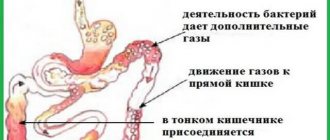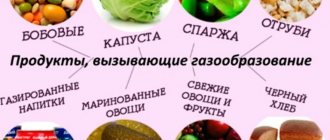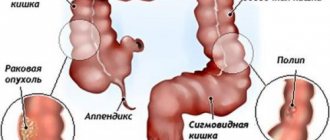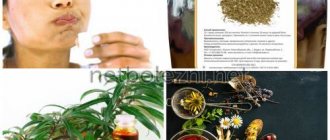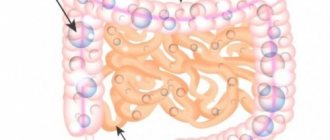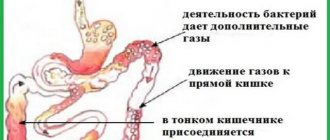Flatulence is a common condition in adults. According to statistics, at least 40% of people who consult a gastroenterologist complain of constant increased gas formation, and up to 100% of people have experienced it at least once in their lives. In the absence of diseases of the gastrointestinal tract, flatulence in adults does not pose a serious threat to health, but it significantly reduces the quality of life and causes a lot of inconvenience.
There are three sources of gas in the intestines:
- air swallowed during eating, talking, smoking;
- formation of gases in the intestinal lumen, including production by intestinal bacteria;
- gases entering the intestines from the blood.
Normally, about 200 ml of gas is present in the gastrointestinal tract at a time. During the day, more than 20 liters are formed, and most of the gases are destroyed and absorbed through the intestinal walls. The exceptions are nitrogen and hydrogen sulfide - they are removed only through the rectum. With flatulence, the volume of gas becomes larger, which causes serious discomfort to the person.
Causes of increased gas formation
Excessive gas formation can be due to a variety of reasons. One of them is the imperfection of the enzyme system or disruption of its function, which is more typical for children in the first days of life. Researchers Yazenok and Zhelnova (Yazenok N.S., Zhelnova T.I., Bondarenko N.V., Novokshenova T.P., Kirsanova A.I., 2003, p. 16). In this case, the following causes of flatulence are distinguished:
- unbalanced diet;
- diseases of the upper gastrointestinal tract: duodenitis, gastritis;
- diseases of the liver and gall bladder: hepatitis of any origin, cholecystitis, etc.
Other mechanisms for the development of the disease include imbalances in the microflora of the colon. With them, carbohydrates and proteins that come with food are not completely absorbed by the mucous membrane. Normally, dietary fiber from fruits and vegetables, especially legumes and coarse-fiber fruits, is broken down by intestinal bacteria. The result of their vital activity is the formation of a large volume of gases. A significant portion of gases is absorbed by aerobic intestinal bacteria. And with dysbacteriosis, the balance between bacteria producing and consuming gases is disrupted. However, it is important to remember that even in the absence of microflora imbalance, a special diet can cause the formation and release of large amounts of gases. A diet based on foods rich in cellulose and beans can cause flatulence. Other products that increase gas formation include soda, lamb meat, as well as products in which fermentation and fermentation processes are already occurring, for example, kvass.
Another mechanism for the development of flatulence is intestinal distension due to paresis. This is due to abdominal surgeries performed. In this case, the cause of flatulence in adults is the very fact of the intervention. After it, intestinal motility slows down, and this leads to fermentation and putrefactive processes. The condition is accompanied by spasmodic pain because gases accumulate in the intestinal lumen.
A common cause of increased gas formation is emotional stress, nervous disorders and shocks. The mechanism of development of this syndrome is explained by spasm of smooth muscles, including the intestines, and a slowdown in peristalsis.
What is a rumbling stomach?
Bubbling or rumbling, not aggravated by additional manifestations, is a normal physiological process in which the intestinal muscles contract when gases or water are present.
Sounds of this nature are made constantly. However, in a healthy digestive tract, they are practically inaudible.
If the rumbling is strong, then this indicates a significant accumulation of gases, which is already a consequence of improper functioning of the intestines or other organs of the gastrointestinal tract, which provoke such a malfunction.
Types of flatulence
Intestinal flatulence can be of several types depending on the causes:
- nutritional – associated with dietary disorders;
- digestive - appears when abdominal digestion is disrupted (with cholelithiasis, gastritis, inflammation of the pancreas, etc.);
- dysbiotic - formed as a result of excessive bacterial growth of the small intestine and/or imbalance of the microflora of the large intestine;
- mechanical - occurs due to a mechanical obstacle to the evacuation of feces and gases (with narrowing of the intestinal lumen, tumor, adhesive disease);
- dynamic - is the result of disturbances in intestinal motor activity (with dyskinesia, acute infection, poisoning);
- circulatory - develops when the blood supply to tissues is disrupted (for example, with ischemic colitis);
- psychogenic - appears in connection with a psycho-emotional state, neuropsychic disorder;
- high altitude - occurs when you rise to a height, gases expand, and pressure in the intestines increases.
Thus, the causes of the disorder can be either minor dietary disturbances or flights, or serious intestinal diseases. A doctor will help you figure this out.
If it rumbles at night, what is it?
Are you bothered by noise at night? There are several reasons: There was probably a long break between dinner and bedtime. This is not dangerous.
- If rumbling is observed sometimes, then pay attention to the amount of food eaten at night.
- The stomach has difficulty digesting what it eats, so it reminds you of it by loud rumbling.
- If noises occur when you lie on your left side, then most likely you have gastritis.
- In case of strong excitement or stress, sounds will also be heard on the left.
- Night rumbling may also indicate the presence of colitis, pancreatitis, and dysbacteriosis. Symptoms can be controlled if treatment is started immediately.
Symptoms of flatulence
Flatulence may be accompanied by pain in various parts of the abdomen, bloating, a feeling of fullness, and a false urge to defecate. The severity of the pain varies depending on the volume of gases, the degree of stretching of the intestinal walls due to the accumulation of gases. Doctors Pakhomovskaya and Venediktova in their work point out that “the intensity of abdominal pain depends not only on the amount of accumulated gases, but also on the level of the threshold of visceral pain sensitivity” (Pakhomovskaya N.L., Venediktova M.M., 2021, p. 34). This means that the reaction can be individual. Much depends on whether a person had colic in infancy. It is known that when they are present, functional pain occurs more often in adulthood.
Flatulence in adults may be accompanied by other manifestations:
- nausea;
- belching;
- bowel disorders;
- decreased appetite;
- irritability, etc.
Doctors conventionally divide flatulence into two variants of manifestation. In the first case, the main symptom is an increase in abdominal volume, that is, bloating. In this case, normal passage of gases does not occur due to spasm of the colon.
In the second option, the passage of gas is violent and frequent, and the pain is not expressed. Patients complain of a characteristic rumbling in the stomach, a feeling of “rolling” in the intestines.
Pain can occur in one area or throughout the entire abdomen. The local nature of the discomfort is associated with the accumulation of gases in a certain part of the intestine, usually in the area of the cecum. They are not necessarily associated with episodes of eating or exercise. Extraintestinal symptoms also rarely occur: burning in the chest, tachycardia, weakness, sleep disturbances.
Clinical manifestations of the disease in children
Excess gases are formed not only in adults. Sometimes children also suffer from this pathology. In addition to internal pressure in the abdomen, a feeling of heaviness in the abdominal cavity and spastic pain, this condition in babies is accompanied by unpleasant belching, hiccups and increased sweating. After successful passage of gases, these symptoms immediately disappear.
I would especially like to note flatulence in an infant. After all, due to his age, the baby is not yet able to explain to his parents what exactly is bothering him. Close people should determine intestinal gas contamination in an infant by its subjective and objective signs. During such colic, the baby begins to worry, be capricious, twitch its legs and cry incessantly.
Features of nutrition during flatulence
The first step in the treatment of intestinal flatulence for any reason is diet correction. It is important to completely avoid foods that stimulate increased gas formation:
- legumes: beans and peas, lentils;
- products rich in cellulose, coarse fiber, essential oils: sorrel, garlic, onions, radishes, gooseberries, dates, etc.;
- products that cause fermentation processes: kvass, black bread, grapes (including raisins);
- alcohol and soda;
- whole milk.
You should also stop chewing gum and smoking or limit the number of cigarettes you smoke.
There are dishes that can be consumed, but in smaller quantities. So, Gureev o (Gureev A.N., 2010, p. 306).
The diet should be based on fermented milk products, buckwheat and millet porridge, low-fat varieties of fish, meat and poultry. It is better to steam or boil food. It is important to choose bread made from wholemeal wheat flour. Vegetables and fruits should be consumed baked or boiled.
Lifestyle change
In the treatment of flatulence, daily routine and healthy habits are important. It is necessary to increase the frequency of meals, up to 5-6 times a day. Breakfast should consist of cereals.
It is important that each meal is calm; there is no need to talk during lunch. Try to chew your food thoroughly and take your time—allow enough time for lunch and snacks during the day. You should also not eat food while lying down. It is better to avoid drinking drinks through a straw or sucking on caramel.
A sufficient amount of water is important in the fight against stool disorders and the formation of large amounts of gas. Researcher Shulpekova in her scientific work points out that “sufficient fluid intake is up to 2–2.5 l/day. helps soften feces and diffusion of gases into the bloodstream” (Shulpekova Yu. O., 2013, p. 57).
You can help yourself with a food diary. Record the foods you eat and your feelings in it. This way you can understand which foods make your symptoms worse.
Folk remedies
Treatment of intestinal gas pollution in some cases can be carried out using natural recipes. The most popular of them are:
- Camomile tea. To obtain it, take 1 tbsp. l. raw materials and pour 250 ml of boiling water over it. The mixture is infused for 30 minutes. Take the drug half a glass twice a day before meals.
- Cleansing enema. It is prepared by adding chamomile infusion to 2 liters of water. An enema is given twice a day in the morning and in the evening. The course of treatment is 2-3 days.
- Juice from cucumber pickle or sauerkraut. They should be drunk half a glass on an empty stomach.
- Tea with milk (slightly salted). Drink it in small sips on an empty stomach.
- Garlic infusion. To prepare it, take 2 cloves of vegetable, 1 tbsp. salt, a little dill and a few leaves picked from a blackcurrant bush. The raw materials are poured with 2 liters of water and left for 24 hours. Take half a glass before meals.
To eliminate flatulence, it is useful to eat grated carrots on an empty stomach. An infusion made from red rowan will be a fairly effective drug.
Drug treatment
Treatment of flatulence in adults may include a number of medications:
- enzyme preparations;
- choleretic drugs;
- probiotics and prebiotics;
- antispasmodics and prokinetics, etc.
Enzyme replacement therapy can help reduce symptoms if they are caused by enzyme deficiency or pancreatic disease. Choleretic agents increase the volume of bile in the intestine, which promotes normal motility in diseases of the hepatobiliary system.
Restoring the normal balance of microflora is an important factor in the treatment and prevention of flatulence. The doctor may prescribe prebiotics, probiotics or synbiotics containing lactobacilli. They have been proven to suppress excess gas formation.
Intestinal motor disorders can be eliminated with the help of prokinetics or antispasmodics. Such prescriptions require careful examination; drugs have certain restrictions and are prescribed according to indications.
Treatment of flatulence that develops as a result of poor nutrition may involve only symptomatic therapy. Adsorbents are able to bind gases in the intestines and reduce their volume, relieving unpleasant symptoms. It is important to understand that some sorbents can cause stool retention, so you should be careful when choosing a drug.
"Fitomucil Sorbent Forte" is a drug that can be recommended for flatulence. This is a natural sorbent, the action of which is complemented by a complex of probiotics in the composition. The product works due to dietary fiber - the shell of plantain seeds: it absorbs toxins, excess liquid and gases, and helps reduce gas formation in the intestines. Inulin in Fitomucil Sorbent has a probiotic effect and stimulates the growth of beneficial microflora. A complex of living probiotic bacteria has a beneficial effect on digestion. One of the indications for the use of the drug is post-infectious digestive disorders in the form of diarrhea, flatulence, and unstable stool.
Application of herbs
What natural remedies help eliminate excess gases, easing the condition of the body?
In their list:
- An infusion made from parsley roots. 1 tbsp. l. raw materials are poured with 100 ml of boiling water and infused for 30 minutes. The drug is filtered and taken 30 minutes before meals, 1 tbsp. l. Traditional healers also recommend using fresh parsley. This plant is an excellent preventative against flatulence.
- Dill water. This remedy can be purchased at a pharmacy or prepared yourself. You will need 1 tsp. dill seeds, which must be crushed, pour 250 ml of boiling water and leave for 60 minutes. After the drug has infused, it is filtered and taken three times a day, 1/3 cup before meals (30 minutes).
- Infusion of sweet clover herb. For it take 1 tsp. raw materials, which are poured with 250 ml of chilled boiled water. Infuse the product for 4 hours. Take ¼ cup before meals.
